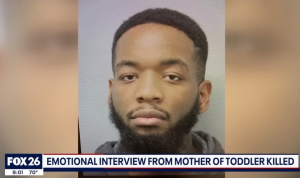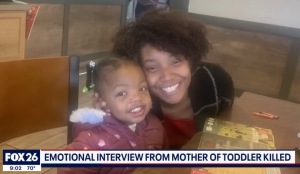A7-year-old boy
Investigators believe the children’s injuries were caused by a household appliance activated while they were unattended. Authorities suspect the 7-year-old turned it on without realizing the danger. Law enforcement and child welfare officials are investigating why the children were left alone and whether the mother, their legal guardian, will face charges for possible negligence.

Experts stress that children under eight cannot reliably judge risk, often imitating what they see on TV or online without understanding real-life consequences. Neighbors reported past concerns, noting the boy had been seen wandering alone.

The 2-year-old is in stable condition but faces a long recovery, possibly involving skin grafts and rehabilitation. Both children are receiving psychological support and remain in protective custody.
Child safety experts urge parents never to leave children under 10 alone, to secure dangerous items, and to use childproof devices. Officials emphasize that preventinLife often unfolds in ways no one can predict. A father expecting a quiet evening at home instead found himself in the middle of a crisis that shook not only his family but also the wider community. What began as a simple walk into his residence turned into a nightmare no parent should ever experience. Though the details of the case are deeply sensitive, what stands out most is not only the shock of the incident but also the resilience of children, the strength of a grieving parent, and the urgent call for society to do more to protect its most vulnerable members.
This is not just the story of one family. It is a reminder of how fragile life can be, how quickly ordinary days can change, and how important community support, mental health resources, and protective services are in preventing tragedies.
The man returned home on what should have been an uneventful day. Like many parents, he was expecting to embrace his children, enjoy their laughter, and unwind from daily responsibilities. Instead, he discovered them in a dangerous and distressing situation that no mother or father should ever have to face.
Authorities confirm that the children were immediately removed from harm and given urgent medical evaluations. Thankfully, they survived. Yet survival is only part of the story — emotional scars often outlast physical wounds. For the father, the sight of his children in danger shattered the sense of security he had built for his family. Witnesses described his heartbreak in raw terms, saying his cries for help echoed through the neighborhood.
News of the incident spread quickly. Neighbors gathered outside the home, shaken by the father’s anguish. One witness later said, “His screams were something I’ll never forget. You could hear the pain in his voice from down the street.”
Communities often see themselves as safe havens, places where families can raise children free from fear. When such a disturbing situation occurs, it disrupts not only the lives of those directly involved but also the shared sense of safety among neighbors. People who lived nearby expressed disbelief, struggling to comprehend how such a crisis could happen in their quiet surroundings.
The Role of Authorities
Police and emergency responders acted quickly. The children were placed under protective care, and officials began investigating the circumstances. Early reports suggest the crisis may have been connected to ongoing domestic struggles within the household. A female suspect was taken into custody and is currently undergoing psychiatric evaluation.
Charges including child endangerment and attempted harm have been filed, but the legal process will take time. In the meantime, authorities are ensuring that the children remain safe, supported, and away from any further risk.
This case highlights a painful but necessary truth: untreated mental health challenges can sometimes spiral into dangerous behavior. While the investigation is ongoing, officials have emphasized the role that mental health may have played in the situation.
Mental health professionals stress that crises like these rarely happen without warning signs. Family stress, unresolved trauma, and lack of access to counseling or treatment can all contribute to tragic outcomes. Experts believe that if communities offered more resources — such as accessible therapy, crisis hotlines, and family support centers — some situations could be prevented before reaching a breaking point.
The most important fact is that the children survived. Physically, they are expected to recover. Emotionally, however, the journey will be much longer. Specialists in child trauma explain that children who endure shocking events may carry invisible wounds for years.
Protective care teams, therapists, and foster programs exist to provide safety and healing. The children will likely receive long-term counseling to process what they experienced and to rebuild a sense of trust and stability. Every effort is being made to ensure they can still look forward to bright futures despite the ordeal.
Once news of the case reached social media, outrage spread quickly. Thousands of people voiced anger and heartbreak, demanding stronger protections for children and harsher consequences for those who harm them.
Community leaders also spoke out, noting that while punishment is necessary, prevention should be the greater priority. They called for increased investment in family services, mental health care, and educational programs that teach conflict resolution and emotional resilience.
The female suspect remains under evaluation and faces multiple charges. In the justice system, such charges are treated with the utmost seriousness, especially when children are involved. Legal experts explain that beyond punishment, cases like this often involve lengthy hearings, assessments of parental rights, and decisions about guardianship or custody.
While the courts will determine the suspect’s fate, one truth is clear: protecting the children and ensuring they never face such danger again is the top priority.
This tragedy has raised pressing questions: How can families recognize early signs of trouble? How can communities respond more effectively when someone shows signs of mental distress?
Experts offer several recommendations:
-
Open communication within families can help detect problems before they escalate.
-
Community awareness programs can teach people to recognize when a neighbor or loved one may need help.
-
Accessible mental health care ensures that those struggling don’t feel alone or abandoned.
-
Emergency hotlines and crisis centers provide immediate intervention when danger is imminent.
By learning from such incidents, families can strengthen their bonds, and communities can improve their support networks.